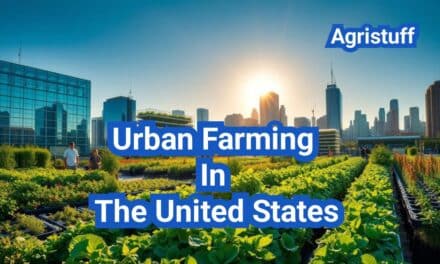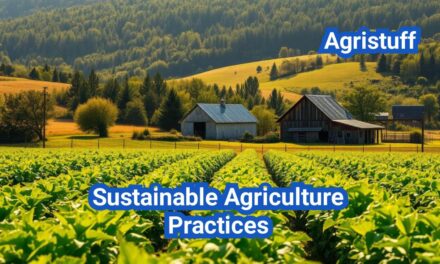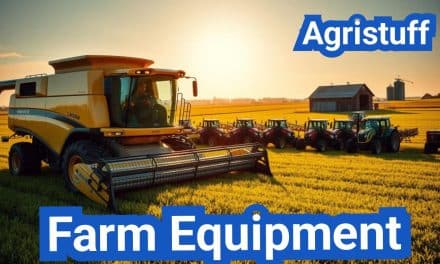The agricultural industry is undergoing a significant transformation with the advent of smart farming technologies. By leveraging IoT in agriculture and precision agriculture techniques, farmers can now optimize crop yields, reduce waste, and promote sustainable farming practices.
One of the key aspects of smart farming is the use of advanced technologies such as vertical farming, which enables crops to be grown in vertically stacked layers, maximizing space and minimizing environmental impact. As the global population continues to grow, smart agriculture will play a vital role in ensuring food security and meeting the demands of a rapidly changing world.
Key Takeaways
- Smart farming technologies are revolutionizing the agricultural industry.
- IoT in agriculture and precision agriculture are key components of smart farming.
- Vertical farming is a promising technique for maximizing crop yields.
- Smart agriculture will play a crucial role in ensuring food security.
- The adoption of smart farming practices can help reduce waste and promote sustainability.
What is Smart Farming?
Agriculture is undergoing a significant transformation with the advent of smart farming techniques. This revolution is driven by the integration of advanced technologies such as the Internet of Things (IoT), artificial intelligence, and data analytics into farming practices.
Definition and Core Concepts
Smart farming, also known as precision agriculture, refers to the use of modern technology to increase crop yields and reduce waste while promoting sustainability. At its core, smart farming involves the use of sensors, GPS, and other IoT devices to collect and analyze data on soil conditions, weather patterns, and crop health. This data-driven approach enables farmers to make informed decisions, optimizing their farming practices.
The core concepts of smart farming include:
- Precision agriculture techniques
- Data analytics for decision-making
- Automation and robotics
- IoT devices for real-time monitoring
Evolution from Traditional to Digital Agriculture
Early agricultural practices centered on the use of human labor, animals, and simple tools. The transition to traditional agriculture marked a significant shift with the introduction of mechanized farming equipment. However, this traditional approach often relied on a one-size-fits-all strategy, neglecting the variability within fields.
The evolution to digital agriculture, or smart farming, represents a paradigm shift. By leveraging technologies like IoT, farmers can now monitor and manage their farms with unprecedented precision. For instance, IoT sensors can detect soil moisture levels, enabling targeted irrigation and reducing water waste.
The integration of digital technologies in agriculture not only enhances efficiency but also contributes to sustainability. As the global population continues to grow, the adoption of smart farming practices will be crucial in meeting the increasing demand for food while minimizing environmental impact.
The Importance of Smart Farming in Modern Agriculture

As the global population continues to grow, smart farming emerges as a critical solution to meet the increasing food demand. The world’s population is projected to reach 9.7 billion by 2050, putting immense pressure on the agricultural sector to produce more food. Smart farming, with its integration of advanced technologies such as IoT, AI, and data analytics, is poised to address this challenge.
Smart agriculture technology is not just about increasing crop yields; it’s also about doing so in a sustainable and environmentally friendly manner. By leveraging data-driven insights, farmers can optimize resource allocation, reduce waste, and promote eco-friendly farming practices.
Addressing Global Food Security Challenges
One of the most significant benefits of smart farming is its potential to address global food security challenges. With the global population growing at an unprecedented rate, agricultural production needs to increase by 70% by 2050 to meet the food demand. Smart farming can help achieve this goal by:
- Enhancing crop yields through precision agriculture and data-driven insights
- Reducing crop losses due to pests and diseases through early detection systems
- Optimizing resource allocation, such as water and fertilizers, to minimize waste
According to the Food and Agriculture Organization (FAO), “smart agriculture can help reduce the environmental footprint of farming while improving productivity and profitability.” By adopting smart farming practices, farmers can contribute to a more food-secure future.
“The use of ICT in agriculture has the potential to increase crop yields by up to 20% while reducing the use of water and other inputs.”
FAO
Economic Benefits for Farmers
In addition to addressing global food security challenges, smart farming also offers significant economic benefits for farmers. By adopting smart agriculture technologies, farmers can:
- Increase their income through improved crop yields and reduced production costs
- Enhance their competitiveness in the market by producing high-quality crops
- Reduce their environmental impact, contributing to a more sustainable farming practice
A study by McKinsey found that precision farming can increase farmers’ profits by up to 10% while reducing production costs by up to 8%. By embracing smart farming, farmers can improve their economic stability and contribute to a more sustainable food system.
Key Components of Smart Farming Systems
The backbone of smart farming lies in its sophisticated systems that integrate various cutting-edge technologies. These systems are designed to optimize agricultural practices, improve crop yields, and reduce waste.
Hardware Infrastructure
Smart farming relies heavily on advanced hardware infrastructure, including IoT devices, sensors, and drones. These devices collect critical data on soil moisture, temperature, crop health, and more.
Key Hardware Components:
- IoT sensors for monitoring soil and crop conditions
- Drones equipped with cameras and sensors for aerial monitoring
- Automated irrigation systems controlled by data analytics
- GPS-guided farming equipment for precision agriculture
Software and Data Analytics Platforms
The data collected by hardware components is processed and analyzed using sophisticated software and data analytics platforms. These platforms provide insights that help farmers make informed decisions.
Key Features of Data Analytics Platforms:
| Feature | Description | Benefit |
|---|---|---|
| Data Integration | Combines data from various sources | Comprehensive view of farm operations |
| Predictive Analytics | Uses historical data to predict future trends | Proactive decision-making |
| Real-time Monitoring | Provides up-to-the-minute data on farm conditions | Immediate response to changing conditions |
By integrating robust hardware infrastructure with advanced software and data analytics platforms, smart farming systems enable farmers to optimize their operations, reduce costs, and improve sustainability.
Internet of Things (IoT) in Agriculture

Agriculture is witnessing a significant shift with the adoption of IoT, making farming smarter. The integration of IoT technology in farming operations is enhancing efficiency, productivity, and sustainability.
Transforming Farming Operations
IoT is transforming farming operations by providing real-time data and insights. This enables farmers to make informed decisions regarding crop management, irrigation, and pest control. With IoT devices, farmers can monitor their fields remotely, reducing the need for manual inspections.
Key benefits of IoT in farming operations include:
- Improved crop yields through data-driven decision-making
- Enhanced water management through real-time monitoring
- Early detection of pests and diseases, reducing losses
IoT Sensors and Their Applications
IoT sensors play a crucial role in agriculture by collecting data on various parameters such as soil moisture, temperature, and crop health. These sensors can be deployed in fields, greenhouses, and storage facilities to monitor conditions in real-time.
| Sensor Type | Application | Benefits |
|---|---|---|
| Soil Moisture Sensors | Monitoring soil moisture levels | Optimized irrigation, reduced water waste |
| Temperature Sensors | Monitoring ambient temperature | Protection of crops from extreme temperatures |
| Crop Health Sensors | Monitoring crop health and detecting diseases | Early intervention, reduced crop losses |
The data collected by IoT sensors is transmitted to cloud-based platforms for analysis, providing farmers with actionable insights to improve their farming practices.
Implementing Smart Farming Technologies
To successfully adopt smart farming, farmers must assess their technology needs and create a tailored implementation plan. This process involves understanding the specific challenges and opportunities on their farm, as well as the technological solutions available.
Assessing Your Farm’s Technology Needs
Assessing technology needs is the first step towards implementing smart farming. Farmers should evaluate their current practices, identify areas for improvement, and determine which technologies can address these gaps. Key considerations include:
- Farm size and layout: Larger farms may benefit from more extensive automation and monitoring systems.
- Crop or livestock type: Different agricultural products have unique requirements for monitoring and management.
- Existing infrastructure: Farmers should consider what equipment and connectivity they already have.
- Budget constraints: Understanding the financial limitations and potential return on investment (ROI) is crucial.
Creating a Smart Farming Implementation Plan
Once the technology needs are assessed, farmers should develop a comprehensive implementation plan. This plan should outline:
- Short-term and long-term goals: Prioritizing immediate needs while planning for future expansion.
- Technology selection: Choosing the most appropriate hardware and software solutions.
- Integration strategy: Planning how new technologies will be integrated with existing systems.
- Training and support: Ensuring that farm staff are adequately trained to use new technologies.
According to a report by the Food and Agriculture Organization, “Investing in agricultural technology can lead to significant increases in productivity and efficiency.”
Budgeting and ROI Calculations
Budgeting is a critical aspect of implementing smart farming technologies. Farmers must consider not only the initial investment but also ongoing costs such as maintenance, data plans, and potential upgrades. Calculating ROI involves assessing both direct benefits (e.g., increased yield, reduced input costs) and indirect benefits (e.g., improved decision-making, enhanced sustainability).
A study by McKinsey & Company found that precision agriculture techniques, a key component of smart farming, can increase farm productivity by up to 20% while reducing input costs by around 15%. Farmers should use such data to inform their budgeting and ROI calculations.
By carefully assessing technology needs, creating a detailed implementation plan, and accurately budgeting for smart farming technologies, farmers can set themselves up for success in this rapidly evolving field.
Precision Agriculture Techniques and Applications

By leveraging cutting-edge technologies, precision agriculture enables farmers to optimize yields and reduce waste. This approach to farming involves the use of advanced technologies, including GPS, GIS, and Variable Rate Technology (VRT), to manage crops more effectively.
Precision agriculture techniques are designed to address the variability in field conditions, allowing for more precise application of resources such as water, fertilizers, and pesticides. This not only improves crop yields but also reduces the environmental impact of farming practices.
Variable Rate Technology Implementation
Variable Rate Technology (VRT) is a key component of precision agriculture, enabling farmers to apply inputs at varying rates across a field based on specific conditions. This technology uses data from various sources, including soil sensors and GPS, to create detailed maps of field variability.
The implementation of VRT involves several steps, including:
- Data collection: Gathering information on soil type, moisture levels, and crop health.
- Data analysis: Using software to analyze the collected data and create prescription maps.
- Application: Utilizing equipment capable of varying the application rate of inputs based on the prescription maps.
Benefits of VRT: Improved crop yields, reduced input costs, and minimized environmental impact.
| Technology | Application | Benefits |
|---|---|---|
| VRT | Variable application of fertilizers, pesticides, and irrigation | Improved yields, reduced costs, environmental conservation |
| GPS/GIS | Field mapping, crop monitoring, and yield analysis | Enhanced precision, better decision-making, optimized resource allocation |
GPS and GIS Applications in Field Management
GPS (Global Positioning System) and GIS (Geographic Information System) are fundamental technologies in precision agriculture, providing the spatial data necessary for informed decision-making. GPS allows for accurate navigation and positioning in the field, while GIS enables the analysis and visualization of spatial data.
Applications of GPS and GIS in field management include:
- Crop monitoring: Tracking crop health and development over time.
- Yield mapping: Creating detailed maps of crop yields to identify trends and patterns.
- Soil mapping: Analyzing soil characteristics to optimize fertilizer and irrigation applications.
“The integration of GPS and GIS technologies has revolutionized the way farmers manage their fields, enabling more precise and efficient farming practices.” – Expert in Precision Agriculture
As precision agriculture continues to evolve, the role of GPS and GIS will remain crucial in helping farmers optimize their operations and improve productivity.
Artificial Intelligence and Machine Learning in Agriculture

The integration of artificial intelligence (AI) and machine learning (ML) in agriculture is revolutionizing the way farmers manage crops and predict yields. By analyzing data from various sources, including IoT devices and drones, AI and ML algorithms can provide valuable insights that help farmers make informed decisions.
Crop Monitoring and Disease Detection Systems
One of the significant applications of AI and ML in agriculture is in crop monitoring and disease detection. Advanced algorithms can analyze images captured by drones or satellites to identify issues such as pest infestations, nutrient deficiencies, and diseases. This early detection enables farmers to take timely action, reducing the risk of crop loss and minimizing the use of chemical pesticides and fertilizers.
For instance, AI-powered systems can be trained to recognize patterns in crop health, allowing for the early detection of diseases. This not only improves crop yields but also contributes to more sustainable farming practices.
Yield Prediction and Optimization Tools
AI and ML are also being used to develop yield prediction and optimization tools. By analyzing historical climate data, soil conditions, and crop performance, these tools can predict yields with a high degree of accuracy. This information helps farmers plan harvesting, marketing, and distribution more effectively.
Moreover, AI-driven optimization tools can suggest the most suitable farming practices, such as the optimal amount of irrigation, fertilizers, and pest control measures, to maximize yields while reducing waste and environmental impact.
By leveraging AI and ML, farmers can not only improve their productivity but also contribute to a more sustainable food system. As these technologies continue to evolve, we can expect to see even more innovative applications in agriculture.
Drone Technology in Smart Farming
The integration of drone technology in smart farming is revolutionizing agricultural practices. Drones, or unmanned aerial vehicles (UAVs), are being increasingly used to enhance crop management, monitor field conditions, and optimize farming operations.
“Drones are changing the face of agriculture,” says Michael Cox, a leading agricultural technology expert. “They provide farmers with real-time data, enabling them to make informed decisions and improve their yields.”
Setting Up Aerial Monitoring Systems
To set up an effective aerial monitoring system, farmers need to consider several factors, including the type of drone to use, the sensors and cameras required, and the software for data analysis. Multispectral or hyperspectral cameras are particularly useful for monitoring crop health and detecting issues such as pest infestations or nutrient deficiencies.
- Selecting the appropriate drone and equipment
- Planning flight paths and monitoring schedules
- Capturing and analyzing data
- Implementing changes based on the insights gained
Implementing Drone-Based Crop Management
Drone-based crop management involves using the data collected from drones to make informed decisions about crop care. This can include:
- Identifying areas of the field that require more water or fertilizer
- Monitoring crop growth and development
- Detecting pests and diseases early
- Optimizing harvest timing
By leveraging drone technology, farmers can reduce costs, improve yields, and promote sustainable agricultural practices. As the technology continues to evolve, we can expect to see even more innovative applications of drones in smart farming.
Climate-Smart Agriculture Practices

The increasing impact of climate change on agricultural productivity has made climate-smart agriculture practices more crucial than ever. As farmers face more frequent droughts, floods, and temperature fluctuations, adopting strategies that enhance resilience and sustainability is essential.
Implementing Sustainable Farming Methods
Sustainable farming methods are at the heart of climate-smart agriculture. These practices not only help mitigate the effects of climate change but also improve soil health, conserve water, and reduce the use of chemical inputs. Some key sustainable farming methods include:
- Crop rotation and intercropping to enhance soil fertility and reduce pests and diseases
- Conservation agriculture to minimize soil disturbance and promote soil health
- Organic farming to reduce chemical inputs and promote biodiversity
- Agroforestry to integrate trees into farming systems, enhancing ecosystem services
By implementing these sustainable farming methods, farmers can improve their resilience to climate change while contributing to a more sustainable food system.
Technologies for Adapting to Climate Change
In addition to sustainable farming practices, various technologies are being developed to help farmers adapt to climate change. These include:
| Technology | Description | Benefits |
|---|---|---|
| Precision Irrigation Systems | Use sensors and data analytics to optimize water application | Water conservation, reduced energy consumption |
| Climate-Resilient Crop Varieties | Developed through breeding programs to withstand extreme weather conditions | Improved yield stability, reduced crop losses |
| Weather Forecasting Tools | Provide accurate and localized weather forecasts to inform farming decisions | Better planning, reduced risk |
By leveraging these technologies and practices, farmers can enhance their ability to adapt to climate change, ensuring a more resilient agricultural sector.
Innovative Farming Models

As the global population grows, innovative farming models like vertical farming and agrivoltaics are becoming increasingly important. These models are designed to increase crop yields while reducing environmental impact, making them crucial for the future of agriculture.
Setting Up Vertical Farming Systems
Vertical farming is an innovative farming model that involves growing crops in vertically stacked layers, often in indoor environments. This method allows for maximum space utilization and can significantly reduce water usage.
The key to setting up a successful vertical farming system is to choose the right crops, ensure adequate lighting (often through LED grow lights), and implement a precise irrigation system. Crops such as leafy greens, herbs, and strawberries are well-suited for vertical farming due to their compact growth habits and high market demand.
| Crop | Water Usage Reduction | Yield Increase |
|---|---|---|
| Leafy Greens | Up to 90% | Up to 30% |
| Herbs | Up to 80% | Up to 25% |
| Strawberries | Up to 70% | Up to 20% |
Integrating Agrivoltaics on Your Farm
Agrivoltaics combines agriculture and photovoltaics, allowing for the simultaneous production of crops and solar energy on the same land. This innovative farming model can enhance farm productivity and sustainability.
To integrate agrivoltaics on your farm, start by assessing your land’s solar potential and crop suitability. Elevated solar panels can be installed to allow for farming activities underneath, creating a dual-use system that benefits both energy production and crop growth.
By adopting innovative farming models like vertical farming and agrivoltaics, farmers can not only increase their yields but also contribute to a more sustainable agricultural sector. These models represent a significant step forward in the evolution of smart farming practices.
Data Management in Smart Farming

As smart farming continues to evolve, the importance of robust data management cannot be overstated. The vast amounts of data generated from various sources such as IoT devices, drones, and sensors necessitate efficient collection, analysis, and storage solutions.
Best Practices for Collecting and Analyzing Farm Data
Effective data collection and analysis are pivotal for making informed decisions in smart farming. Best practices include:
- Implementing a centralized data management system to integrate data from various sources.
- Utilizing advanced analytics tools to derive insights from the collected data.
- Ensuring data quality through regular validation and cleansing processes.
According to a report by McKinsey, farmers can increase their yields by 10-15% by leveraging data analytics.
“The use of data analytics in farming can lead to significant improvements in productivity and efficiency.”
| Data Source | Type of Data | Application |
|---|---|---|
| IoT Sensors | Soil Moisture, Temperature | Irrigation Management |
| Drones | Aerial Imagery | Crop Monitoring |
| Weather Stations | Weather Data | Climate Risk Management |
Ensuring Data Privacy and Security
With the increasing reliance on data, ensuring its privacy and security is paramount. Measures include:
- Implementing robust cybersecurity protocols to protect against data breaches.
- Establishing access controls to limit data access to authorized personnel.
- Encrypting sensitive data both in transit and at rest.
Data privacy and security are not just regulatory compliance issues; they are critical to maintaining trust in smart farming technologies.
In conclusion, effective data management is the backbone of successful smart farming operations. By adopting best practices for data collection, analysis, and security, farmers can maximize the benefits of their smart farming initiatives.
Step-by-Step Guide to Smart Farming Adoption

Smart farming adoption is a multi-phase process that begins with thorough assessment and planning. This guide will walk you through the essential steps to successfully integrate smart farming technologies into your agricultural practices.
Phase 1: Assessment and Planning
The first phase in adopting smart farming technologies is to assess your farm’s specific needs and create a comprehensive plan. This involves evaluating your current farming practices, identifying areas for improvement, and determining the technologies that best suit your operations.
- Conduct a thorough analysis of your farm’s infrastructure and existing technology.
- Identify key areas where smart farming technologies can improve efficiency and productivity.
- Develop a detailed plan outlining your goals, budget, and timeline for implementation.
Phase 2: Technology Selection and Implementation
Once you have a clear plan, the next step is to select and implement the appropriate technologies. This phase involves choosing the right hardware and software solutions that align with your farm’s needs.
Key considerations for technology selection include:
- Compatibility with existing systems.
- Scalability to accommodate future growth.
- User-friendliness for farm workers.
- Integration with IoT devices and data analytics platforms.
Phase 3: Monitoring and Optimization
After implementing smart farming technologies, it’s crucial to continuously monitor their performance and optimize their use. This involves collecting and analyzing data to make informed decisions and adjustments.
Best practices for monitoring and optimization include:
- Regularly reviewing data from IoT sensors and other monitoring systems.
- Using data analytics to identify trends and areas for improvement.
- Adjusting farming practices based on insights gained from the data.
- Continuously training farm staff on new technologies and best practices.
By following these three phases, farmers can ensure a successful transition to smart farming practices, enhancing their productivity, efficiency, and sustainability.
Overcoming Challenges in Smart Agriculture Adoption

The adoption of smart agriculture technologies is not without its hurdles, with cost and technical expertise being major concerns. As farmers increasingly turn to digital solutions to improve efficiency and productivity, they must navigate a complex landscape of challenges.
Addressing Cost and ROI Concerns
One of the primary barriers to smart agriculture adoption is the initial investment required for technology implementation. Farmers must consider not only the upfront costs but also the potential return on investment (ROI). To address these concerns, it’s essential to:
- Conduct thorough cost-benefit analyses
- Explore financing options and government incentives
- Implement technologies in phases to manage costs
- Monitor and adjust operations to maximize ROI
By taking a strategic approach to technology adoption, farmers can better manage costs and achieve a positive ROI. This may involve starting with low-cost, high-impact technologies and gradually scaling up to more complex systems.
Developing Technical Skills and Training Programs
Another significant challenge in smart agriculture adoption is the development of technical skills among farm workers. As technology becomes more prevalent, the need for skilled personnel to operate and maintain these systems grows. To address this, farmers should:
- Invest in comprehensive training programs for employees
- Collaborate with technology providers for support and knowledge transfer
- Encourage ongoing education and professional development
- Foster a culture of innovation and adaptability within the organization
By focusing on skill development and training, farmers can ensure that their workforce is equipped to effectively utilize smart agriculture technologies, maximizing their benefits and driving long-term success.
Future Trends in AgTech
Emerging trends in AgTech are set to redefine the way we farm, making it more efficient and sustainable. The agricultural sector is witnessing a significant transformation with the integration of advanced technologies.
Innovations on the Horizon
Several emerging technologies are poised to revolutionize AgTech. These include:
- Artificial Intelligence (AI) and Machine Learning (ML) for predictive analytics and decision-making.
- Internet of Things (IoT) devices for real-time monitoring and automation.
- Drone Technology for aerial surveillance and crop management.
- Blockchain for supply chain transparency and security.
These technologies are not only enhancing current farming practices but are also paving the way for next-generation farming systems.
Preparing for Next-Generation Farming Systems
To prepare for the future, farmers and agricultural businesses must stay informed about the latest AgTech trends. This involves:
- Investing in ongoing education and training to develop the necessary technical skills.
- Assessing and adopting new technologies that align with their farming operations.
- Engaging with AgTech communities and forums to share knowledge and best practices.
The table below highlights some key emerging technologies and their potential applications in agriculture:
| Technology | Application | Benefit |
|---|---|---|
| AI and ML | Predictive analytics for crop yields and disease detection. | Improved decision-making and reduced losses. |
| IoT Devices | Real-time monitoring of soil moisture and temperature. | Optimized irrigation and reduced water waste. |
| Drone Technology | Aerial surveillance for crop health and growth monitoring. | Early detection of issues and targeted interventions. |
By embracing these emerging technologies, the agricultural sector can look forward to a more sustainable, efficient, and productive future.
Finally: The Future of Smart Farming
Smart farming has emerged as a revolutionary force in the agriculture industry, transforming traditional farming practices into highly efficient, data-driven operations. By leveraging technologies such as IoT, AI, and drone technology, farmers can now optimize crop yields, reduce waste, and minimize environmental impact.
The future of smart farming looks promising, with ongoing advancements in agriculture industry trends, including the integration of emerging technologies like agrivoltaics and vertical farming. As the global population continues to grow, smart farming will play a crucial role in addressing food security challenges while promoting sustainable agricultural practices.
Understanding all about smart farming is essential for farmers, policymakers, and industry stakeholders to harness its full potential. By adopting smart farming technologies and practices, the agriculture industry can look forward to a more sustainable and productive future, shaping the smart farming future.
FAQ
What is smart farming, and how does it differ from traditional farming methods?
Smart farming is an agricultural practice that integrates advanced technologies like IoT, AI, and data analytics to optimize crop yields, reduce waste, and promote sustainable farming practices. It differs from traditional farming by leveraging technology to make data-driven decisions.
How does IoT contribute to smart farming?
IoT plays a crucial role in smart farming by enabling real-time monitoring of farm conditions, automating irrigation systems, and tracking livestock health. IoT sensors and devices provide valuable data that farmers can use to make informed decisions.
What are the benefits of precision agriculture techniques in smart farming?
Precision agriculture techniques, such as variable rate technology and GPS/GIS applications, help farmers optimize crop yields, reduce fertilizer and pesticide usage, and minimize environmental impact. These techniques enable farmers to make targeted interventions, reducing waste and improving resource allocation.
How can artificial intelligence and machine learning be applied in agriculture?
AI and ML can be used in agriculture for crop monitoring, disease detection, yield prediction, and optimization. These technologies enable farmers to analyze large datasets, identify patterns, and make data-driven decisions to improve crop health and productivity.
What is climate-smart agriculture, and how can it help farmers adapt to climate change?
Climate-smart agriculture refers to farming practices that promote sustainable agriculture, improve resilience to climate change, and reduce greenhouse gas emissions. Techniques like agroforestry, conservation agriculture, and climate-resilient crop and animal varieties help farmers adapt to climate change.
How can farmers implement smart farming technologies on their farms?
Farmers can start by assessing their technology needs, creating a smart farming implementation plan, and budgeting for ROI calculations. They can then select and implement relevant technologies, such as IoT sensors, drones, or precision agriculture tools, and monitor their effectiveness.
What are the challenges of adopting smart agriculture, and how can they be addressed?
Challenges include high upfront costs, technical complexity, and data management. To address these challenges, farmers can develop technical skills, invest in training programs, and explore financing options or government incentives.
What are the future trends in AgTech, and how will they shape the industry?
Emerging trends include the use of AI, blockchain, and edge computing in agriculture. These technologies will enable more efficient, sustainable, and resilient farming practices, and will likely shape the future of smart farming.
How can farmers ensure data privacy and security in smart farming?
Farmers can ensure data privacy and security by implementing robust data management practices, using secure data storage solutions, and adhering to data protection regulations. They should also be cautious when sharing data with third-party service providers.
What is the role of agrivoltaics in smart farming?
Agrivoltaics involves integrating solar panels into farming systems, providing a dual benefit of renewable energy generation and agricultural productivity. This approach can help farmers reduce their carbon footprint and improve their energy independence.
How can vertical farming contribute to smart agriculture?
Vertical farming involves growing crops in vertically stacked layers, often in indoor environments. This approach can increase crop yields, reduce water usage, and promote year-round production, making it a valuable component of smart agriculture.
Conclusion of: Smart Farming
Smart farming is revolutionizing agriculture by integrating advanced technologies such as the Internet of Things (IoT), artificial intelligence (AI), drones, robotics, and big data analytics to optimize farming practices. In this article, we’ll explore the benefits, technologies, trends, challenges, and future of smart farming, with a focus on boosting U.S. agriculture and search visibility.
What Is Smart Farming and Why It Matters
Smart farming utilizes IoT sensors, drones, AI models, and real‑time data analytics to help farmers manage crops and livestock more efficiently. By analyzing soil moisture, crop health, weather conditions, and more, farmers can make informed decisions to optimize water, fertilizer, and pesticide usage, ultimately increasing yields and reducing costs seeedstudio.com. With U.S. farms aiming to meet global food demand while conserving resources, smart farming is increasingly central to modern agriculture.
External link: What Is Smart Farming? – detailed overview of smart farming concepts.
The Core Technologies Behind Smart Farming
Smart farming integrates technologies like sensors, IoT networks, drones, satellite imagery, robotics, and machine learning. Sensors measure factors such as soil moisture, temperature, and nutrient levels. Drones and satellites provide aerial monitoring, while IoT systems transmit data to cloud platforms for AI-driven analysis .
External link: Smart Farming Technologies – explores IoT architecture and field deployment.
Precision Agriculture: The Smart Farming Pillar
Precision agriculture is a cornerstone of smart farming. It uses GPS mapping, variable-rate technology, real‑time data collection, and automated machinery to treat different field zones uniquely. This reduces input waste and enhances crop quality and yields .
External link: Precision Agriculture Trends – covers data‑driven farming innovations.
AI-Driven Crop Management
AI and machine learning play a growing role in smart farming. They analyze massive datasets from IoT sensors and satellite images to detect pest outbreaks, predict weather patterns, and guide irrigation. In U.S. labs like Purdue’s IoT4Ag, soil sensors and AI-powered robots facilitate in‑season decision‑making businessinsider.com.
External link: AI Applications in Farming – Financial Times report on AI’s societal benefits, including precision farming.
Drones, Robotics, and Autonomous Machinery
Smart farming includes drones for aerial field surveys, AI-guided tractors, and robots performing tasks like planting, weeding, and harvesting. For example, John Deere’s autonomous tractors can map farmland and optimize operations, while AI-powered robots tackle weed control with precision .
External link: FarmWise Robotics – a leading U.S. startup in autonomous weeding technologies.
IoT Sensors and Smart Networks
Soil, moisture, humidity, pH, and nutrient levels can be monitored through IoT-enabled sensors that transmit data wirelessly. Advanced systems, such as biodegradable sensors developed in Iowa, help farmers optimize irrigation and nutrient application businessinsider.com.
External link: Nanotechnology in Ag – outlines nanosensor breakthroughs relevant to smart farming.
Big Data and Cloud Analytics
Smart farming generates massive datasets, which cloud‑based platforms process using advanced analytics. These systems enable predictive modeling, real‑time alerts, and optimized workflows—from planting schedules to harvest timing—improving operational resilience and profitability eos.com.
External link: Local Weather Forecasting via IoT/AI – arXiv paper on IoT‑driven weather forecasting systems.
Sustainability and Environmental Impact
Smart farming promotes environmental stewardship by optimizing input usage, reducing runoff, conserving water through precision irrigation, lowering emissions, and supporting climate-smart practices .
External link: Climate-Smart Agriculture – initiative overview jointly led by the U.S. and UN.
U.S. Adoption & Economic Trends
In North America, the smart farming market led the global industry in 2024, with an estimated value of USD 25.4 billion and projected to double by 2030 iso.org+8grandviewresearch.com+8iotforall.com+8. Around 27% of U.S. farms used precision agriculture technologies as of 2023 businessinsider.com+1gao.gov+1. Government programs in the U.S. are supporting rural connectivity and research initiatives, giving farmers the digital infrastructure they need .
External link: USDA Ag Tech Info – USDA NIFA overview of technology adoption.
Advantages of Smart Farming
- Efficiency & Cost Savings: Resource usage is optimized, reducing waste and lowering input costs agrirs.co.uk+1eos.com+1.
- Yield Improvement: AI and data-driven decisions consistently enhance farm productivity .
- Environmental Gains: Precision techniques reduce runoff, emissions, and pesticide impacts .
- Resilience: Real‑time insights and predictive analytics help manage droughts, pests, and fluctuating climate .
- Labor Alternatives: Autonomous systems help offset declining farm labor forces, particularly in the U.S. .
Challenges and Barriers
- High Costs: Initial investment in hardware and infrastructure can be daunting .
- Connectivity Issues: Rural broadband or 5G can be unreliable, limiting IoT effectiveness icl-group.com+8businessinsider.com+8grandviewresearch.com+8.
- Technical Skills Gap: Adoption relies on farmers’ understanding of data and tech tools fnb.tech+15arxiv.org+15businessinsider.com+15.
- Data Overload: Filtering useful information from massive streams of sensor data requires robust analytics .
External link: GAO Report on Precision Ag – U.S. GAO assessment of cost-benefit issues.
Emerging Trends in Smart Farming
- Agrivoltaics: Combining solar panels with crop or livestock production to maximize land use and water savings en.wikipedia.org+1washingtonpost.com+1.
- Nanotech & Nanosensors: Advanced detection of nutrients, moisture, and plant diseases at a molecular level en.wikipedia.org.
- Controlled-Environment & Vertical Farms: Indoor systems using LED light and robotics to produce high-value crops year‑round .
- Microbial & Regenerative AgTech: AI‑assisted biofertilizers and soil restoration technologies aiming for climate resilience .
External link: Vertical Farming Overview – scale and benefit insights for U.S. indoor farms.
Policy, Research, and Collaboration
Government, academia, and industry collaborations, like NSF’s IoT4Ag, are vital for building rural infrastructure, expanding research on biodegradable sensors, and refining AI models businessinsider.com. Continued investment in connectivity, farmer training, and ag‑tech startups is critical for nationwide rollout.
External link: Business Insider Coverage – outlines rural connectivity challenges and efforts.
The Future of Smart Farming in the U.S.
Expect smarter farms powered by AI‑led agro decisions, sensor networks, autonomous systems, and sustainable energy like agrivoltaics. These will boost productivity, reduce environmental cost, and enhance resource resilience. As digital farming scales, adoption barriers such as cost and connectivity are likely to diminish, supported by public and private investment.
Final thought
Smart farming represents a pivotal transformation for U.S. and global agriculture—combining efficiency, sustainability, and technology. Embracing IoT, AI, robotics, and data analytics helps growers meet rising food demand while preserving natural resources. With ongoing innovation and collaboration, smart farming will shape a resilient agricultural future.










